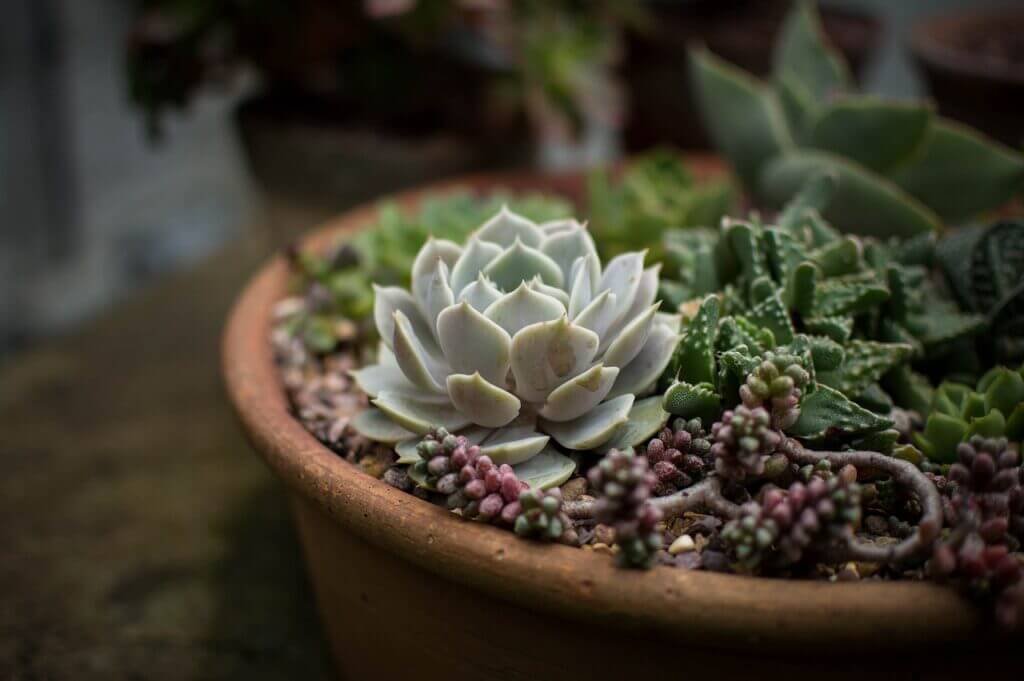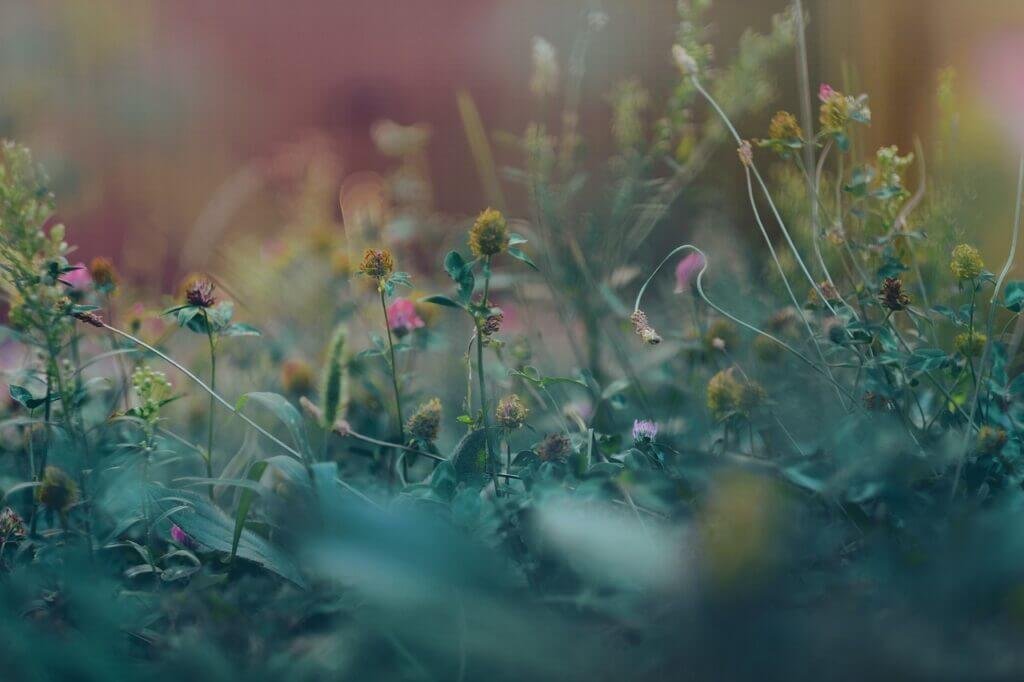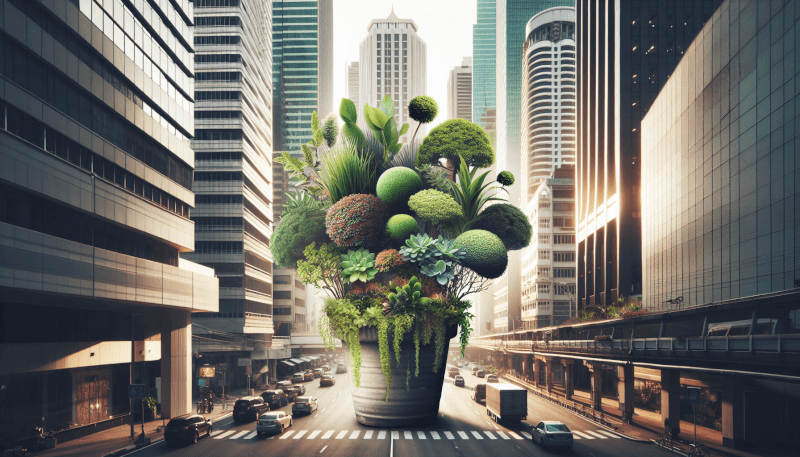If you have ever daydreamed about cultivating a lush garden, filled with vibrant flowers and homegrown vegetables, but thought it was impossible in the confines of a city apartment, think again! Container gardening is the answer to your green thumb aspirations. This innovative gardening technique allows you to create a beautiful and thriving garden using pots, planters, and various containers. Whether you have a spacious rooftop, a tiny balcony, or even just a sunny windowsill, container gardening can transform any urban space into a verdant oasis. Not only is it a practical way to enjoy nature in the city, but it also provides an opportunity to connect with nature, reduce stress, and even harvest your own fresh produce. So, let’s explore the world of container gardening and discover how you can cultivate your own urban garden.

What is container gardening?
Definition of container gardening
Container gardening is a method of growing plants in containers or pots instead of planting them directly in the ground. It is a popular gardening technique, especially for those living in urban areas with limited space. Containers can be placed on balconies, rooftops, patios, or even indoors, allowing individuals to create their own green oasis in the midst of a bustling city.
Benefits of container gardening
Container gardening offers numerous benefits for urban dwellers. First and foremost, it allows individuals to cultivate plants even in small and cramped spaces. Whether you have a tiny balcony or a rooftop, container gardening enables you to bring nature into your urban environment.
Furthermore, container gardening provides greater control over the growing conditions for plants. You can choose the specific soil mixture, adjust watering techniques, and even move the containers to maximize exposure to sunlight. This level of control can lead to healthier plants, better yields, and a more successful gardening experience overall.
Another advantage of container gardening is the ability to personalize your green space. With a wide variety of container options available, you can create a unique and aesthetically pleasing garden that reflects your personal style. Container gardening also allows for flexibility, as you can easily rearrange and relocate the containers whenever desired.
Types of plants suitable for container gardening
Container gardening offers limitless possibilities when it comes to plant selection. However, certain plants excel in container environments and are particularly well-suited for urban gardening. Here are a few examples:
Herbs: Herbs like basil, mint, and rosemary thrive in containers. They are compact, aromatic, and can be easily harvested whenever you need to add a burst of flavor to your cooking.
Flowers: A wide range of flowers, such as petunias, geraniums, and marigolds, can be grown in containers. They add color and beauty to any urban space.
Leafy greens: Vegetables like lettuce, spinach, and kale grow well in containers, allowing you to enjoy fresh and nutritious greens right at home.
Fruit trees: Certain fruit trees, such as citrus trees and fig trees, can be grown in containers. These compact fruit trees contribute to the overall ambiance of your garden while providing you with a delicious harvest.
Essential elements for successful container gardening
To ensure success in container gardening, it is important to consider and provide the following essential elements:
Adequate drainage: Containers should have drainage holes to allow excess water to escape. Proper drainage prevents waterlogged soil, which can lead to root rot and other plant diseases.
Well-draining soil mix: The choice of soil mixture is crucial for container gardening. A high-quality potting mix that is well-draining and rich in nutrients is ideal. Avoid using garden soil, as it tends to become compacted in containers and hinder plant growth.
Proper watering: Container plants typically require more frequent watering compared to those in the ground. It is important to monitor the moisture levels of the soil and water the plants accordingly. Overwatering or underwatering can both harm the plants.
Adequate sunlight: Most plants require a certain amount of sunlight for proper growth. Ensure that your containers are placed in areas that receive the appropriate amount of sunlight based on the plant’s requirements.

Choosing containers for urban gardening
Types of containers
When it comes to container gardening, there is a wide variety of containers to choose from. Here are a few popular options:
Terracotta pots: Terracotta pots are a classic choice for container gardening. They are made from clay and provide good insulation for plant roots. However, they can be prone to drying out quickly and may require more frequent watering.
Plastic containers: Plastic containers are lightweight, affordable, and readily available. They come in various sizes and shapes, making them versatile for different types of plants. However, they may not provide as much insulation as other materials.
Hanging baskets: Hanging baskets are a great option for utilizing vertical space. They are typically made of wire or woven materials and can be suspended from hooks or brackets. They are ideal for trailing plants and flowers, adding a touch of elegance to your urban garden.
Window boxes: Window boxes are designed to be mounted on windowsills or railings, allowing you to bring your garden right up to your windows. They come in various materials, such as wood, metal, or plastic, and can accommodate a wide range of plants.
Size and shape considerations
When selecting containers for your urban garden, consider the size and shape requirements of your chosen plants. Some plants, like herbs and small flowers, can thrive in smaller containers, while others, such as fruit trees, require larger and deeper pots. Ensure that the containers provide enough space for the plant’s root system to grow and develop properly.
Additionally, consider the shape of the container. Taller plants may require taller or deeper containers to accommodate their root growth, while trailing plants like vines may thrive in wider containers or hanging baskets. The shape of the container can also enhance the overall aesthetic appeal of your urban garden, so choose containers that complement your desired design.
Materials for containers
Different materials offer varying advantages and disadvantages for container gardening. Here are a few common container materials and their characteristics:
Plastic: Plastic containers are lightweight, durable, and affordable. They are available in a wide range of sizes and designs. However, they may not provide as much insulation as other materials and can degrade over time due to exposure to sunlight.
Terracotta: Terracotta containers are aesthetically pleasing and provide good insulation for plant roots. They are more porous than plastic, allowing better airflow to the roots. However, they can be heavier and more fragile, and may require additional care to prevent cracking or breaking.
Wood: Wooden containers, such as cedar or redwood, are attractive and offer natural insulation for plant roots. They are often used for larger plants or vegetable gardens. However, wood containers can rot over time and may need to be treated to ensure durability.
Metal: Metal containers, like those made from galvanized steel or aluminum, are durable and can withstand various weather conditions. They provide a modern and sleek look to an urban garden. However, metal can retain heat more than other materials, potentially affecting the root temperature inside the container.
Self-watering containers
For those who may not have the time or ability to water their plants regularly, self-watering containers can be a convenient solution. These containers have a reservoir at the bottom that holds water, and a wicking system that delivers moisture to the roots as needed. Self-watering containers help maintain consistent moisture levels in the soil and prevent overwatering or underwatering. They can be particularly beneficial in urban environments with hot and dry weather conditions.

Selecting the right soil and fertilizers



